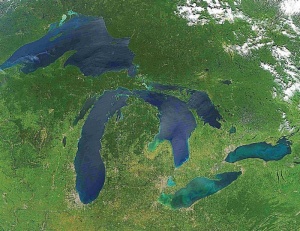Message from the Dean

Dear GSE Alumni and Friends,
As we settle into fall, I wish to take a moment to reflect on my first five years as dean of UB’s Graduate School of Education. It has been an honor to serve in this capacity alongside so many talented, kind and dedicated faculty and staff. Throughout these five years, I have been continuously impressed by the professionalism, collegiality and respect that members of the GSE community extend to one another. Our students, as well, have been nothing short of amazing, persisting as they have through the uncertainties of COVID and through the challenges of so much social unrest.
While there are many things about which I am extremely proud, GSE's steadfast and authentic commitment to equity, diversity, justice and inclusion tops the list. In this issue, you will become acquainted with many of our new faculty who were hired specifically because of the work that they do to address race and inequity in schools and society at large. We are so excited to have such a large group of new and engaging faculty as part of our GSE community.
One of the things I love most about being a part of an academic community is that we get to come together for lectures, panels, brown bags and general conversations. These moments are incredibly rewarding. This fall, we were fortunate to have three significant events—the Inaugural Johnstone Distinguished Lecture Series in Comparative Education Policy took place earlier this semester. We were so excited to be joined by former SUNY Chancellor and GSE emeritus faculty member Dr. Bruce Johnstone and his wife Gail for a fascinating lecture by Dr. Richard Arum, professor of education from the University of California, Irvine. The Alberti Center for Bullying Abuse Prevention’s annual conference featured Dr. Janine Jones, professor of school psychology from the University of Washington, as the keynote speaker. Dr. Jones spoke about the importance of centering diversity, equity and inclusion to promote positive school culture and student well-being. Supported by the GSE EDJI Committee, The Center for K–12 Black History and Racial Literacy Education recognized the legacy and contributions of Dr. James Banks to multicultural education through a multi-day tribute that included panels, brown bags and a fireside chat.
GSE faculty continue to engage in important and impactful research. As a result, our grant activities continue to grow. In just the last few months alone, GSE faculty have secured two NSF Grants, three Spencer Foundation grants and one U.S. Department of Education grant.
In this issue, you will read about the continued success of our UB Teacher Residency Program. Not only did the program receive another U.S. Department of Education grant, but more importantly, the program received a special mention from the Secretary of Education as a program that has identified ways to address the teacher shortage. We are very proud of our residents and the work they are doing.
These are just a few of GSE’s points of pride. If you haven’t been engaged with GSE, I encourage you to reacquaint yourself. There are so many exciting things going on. We are planning a robust series of alumni activities for winter and spring, so please be on the lookout for announcements of these events. Enjoy this issue of Learn and keep in touch.
Warmly,

Suzanne Rosenblith
Land Acknowledgment Statement

A pledge to peaceably share and care for North America’s five Great Lakes
We would like to acknowledge the land on which the University at Buffalo operates, which is the territory of the Seneca Nation, a member of the Haudenosaunee/Six Nations Confederacy. This territory is covered by The Dish with One Spoon Treaty of Peace and Friendship, a pledge to peaceably share and care for the resources around the Great Lakes. It is also covered by the 1794 Treaty of Canandaigua, between the United States Government and the Six Nations Confederacy, which further affirmed Haudenosaunee land rights and sovereignty in the State of New York. Today, this region is still the home to the Haudenosaunee people, and we are grateful for the opportunity to live, work, and share ideas in this territory.